Vibrant venice's wondrous waterways
Updated: 2015-08-12 08:15
By Mike Peters(China Daily)
|
||||||||
The city's canals are arteries pumping its lifeblood. Mike Peters coasts through the Italian attraction.
The good news: Venice doesn't really stink. And the food's not bad.
People may tell you otherwise.
But they typically haven't been to the canal city for 20 or 30 years.
Today, the city's fairy-tale reputation, going back to its heyday as a medieval sea power and the terminus of the Maritime Silk Road, seems perfectly secure.
A decade ago, the city allowed sites like the legendary Gritti Palace to be converted to luxury hotels, and food - and the 50-year-old bathrooms - got better with a new wave of competition, locals say.
So, if you're heading to northern Italy for this year's Venice Art Biennale or the Milan Expo, plan to linger in one of the world's most romantic cities. It's no accident that Casanova lived and loved here.
Famously built on water, the myriad canals create a unique vibe for visitors.
I arrived at the city's main train station, Santa Lucia, late in the evening - worried I wouldn't be able to get on to my destination hotel until the next morning.
"Why not, signore (sir)?" asked a shop clerk near the hotel.
"The vaporetto run 24 hours! Don't worry. I'll call your hotel, and they will be waiting for you. You can be there in 30 minutes or so."
The vaporetto - the first Italian word to know here - is the water taxi, the city's floating metro.
Romantic postcards may suggest everyone's getting around by gondola - the long skinny boats powered by a single oar, perhaps propelled by a Pavarotti wannabe singing O Sole Mio, waiting for his big break.
That's indeed the scene on the narrow canals that wind into each island's interior. But all kinds of boats ply the major waterways, from ferries to sporty speedboats to grand wooden sailboats taking tourists out for winery tours and a sunset seafood dinner on the deck.
Getting your head around the Venice area's many neighborhoods can be daunting. (Besides a national guidebook for Italy, Lonely Planet publishes a separate 300-page guide to Venice's attractions.)
Using the "water bus" on your first day is a good way to get oriented.
"The organizers of the medieval Republic of Venice were very clever," says Michel Thoulouze, a French expat and winemaker who has long enjoyed the city and has lived here since 2010.
"Each island had a purpose. On Murano, it was glass. On Burano, which started as a fishing village, they also make lace and linen. One island was for the women's asylum; another for the men's asylum.
"Here on the island of San Erasmo, people grew fruits and vegetables for markets, which has continued even to today."
There are various wineries in the area, though Thoulouze says his Orto winery is the only one with onsite production from grape-growing all the way to bottling.
His premium label is literally aged in the nearby lagoon, where he tucks bottles into a sunken boat and lets them mature underwater in the cool darkness.
Tours and top hotels offer day-trips to vineyards in the area, some with restaurants or boutique hotels attached. These aren't legacies from ancient times, however.
"By the 17th century, there were less and less invasions, and they stopped making wine on the islands," says Thoulouze.
"It was easy to get wine from the mainland and use the land for other crops."
When he and his partners planted the Orto vineyard a decade ago, "people thought we were crazy", he says.
But now boutique wineries are going strong, offering intriguing vintages that can only be local, and match the fresh seafood and vegetables harvested on the garden islands.
The best way to taste them? Hire a gondola on the Grand Canal and stop at piers that strike your fancy where small bars and taverns offer dockside cicheti (Venetian tapas piled high with fresh octopus and other goodies) and boffo local vintages by the glass.
Neighborhoods with backstreets that are cicheti hotspots: Castello, the long canals of Cannaregio, around the Rialto Market, and - of course - San Marco.
San Marco is the city's fulcrum and the most popular tourism base.
Key attractions like the stunning Palazzo Ducale, the opera house La Fenice and St. Mark's Basilica are all there, as is the Museo Fortuny, the sleek fashion house famed for its bohemian chic. Goti Mosaico art glass gleams in old churches.
In the nearby Castello district is the Arsenale, the great medieval shipyard founded in 1104.
Employing as many as 16,000 people, it could turn out a complete ship in a day - and needed to in the era of its fiercest fighting with Genoa. More than 3 kilometers of imposing walls keep prying eyes at bay even today, though the Arsenale annually welcomes the public during the alternating Art and Architecture biennales.
Open year-round is the adjacent Museo Historico Navale, a four-story shrine to the Venice city-state's storied seafaring past.
There are scale models of ships from Venice's days as the terminus of the old Maritime Silk Road, as well as Peggy Guggenheim's eye-popping custom gondola.
The piazza at San Marco is the Times Square of Venice. And the huge cobblestoned area can seem just as crowded.
Venture out of the central square and wander (or float) along the canals and narrow alleyways, and you almost immediately feel far from the maddening crowd.
Surprisingly, even San Marco's square thins out by sunset.
The Eastern European tour buses leave at 6 pm, the cruise ships leave at 7, Thoulouze says, with a big grin.
"Even San Marco gets suddenly quiet in the evening, and you can have a nice, nice walk in Venice - just like in the movies."
Contact the writer at michaelpeters@chinadaily.com.cn
(China Daily 08/12/2015 page19)

 The world in photos: Aug 3-9
The world in photos: Aug 3-9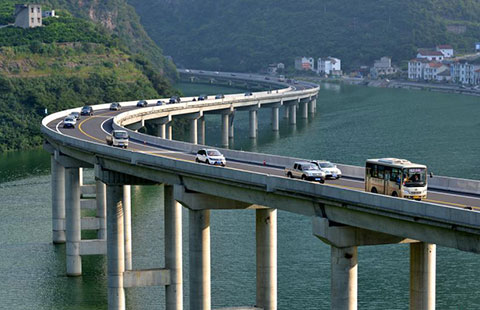
 'Most beautiful road on water'
'Most beautiful road on water'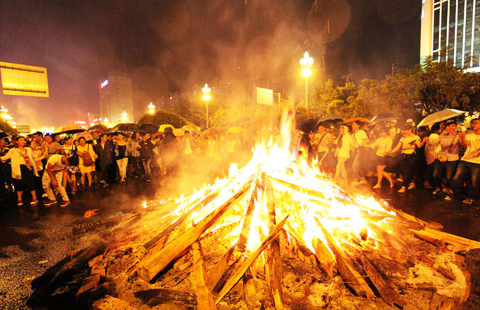
 Ethnic groups celebrate the Torch Festival
Ethnic groups celebrate the Torch Festival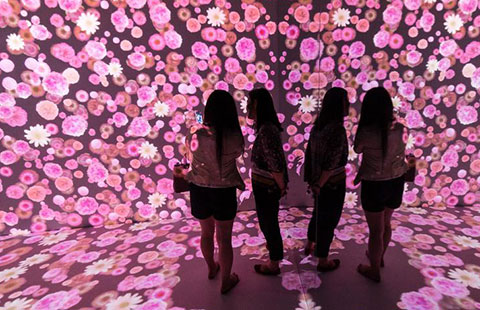
 Ten photos you don't wanna miss (Aug 3-9)
Ten photos you don't wanna miss (Aug 3-9)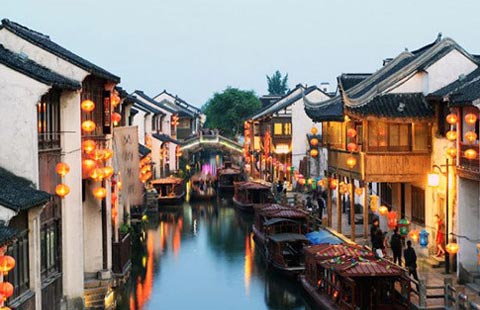
 30 historic and cultural neighborhoods to visit in China
30 historic and cultural neighborhoods to visit in China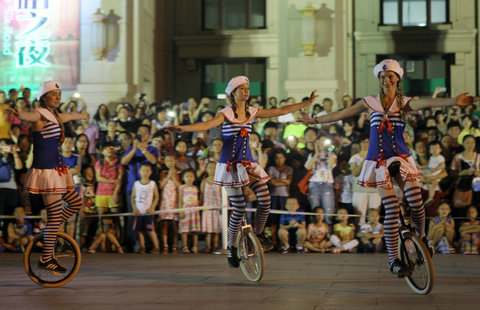
 Beijing Museum of Natural History unveils 'Night at the Museum'
Beijing Museum of Natural History unveils 'Night at the Museum'
 Sun Yang wins third consecutive 800m free gold at worlds
Sun Yang wins third consecutive 800m free gold at worlds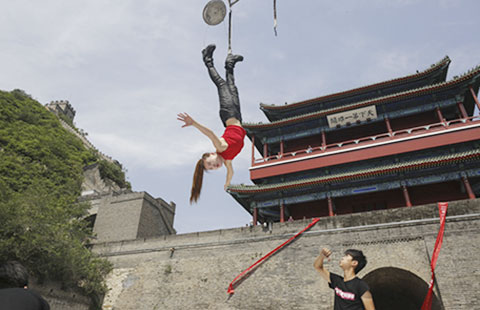
 Aerial escape
Aerial escape
Most Viewed
Editor's Picks

|

|

|

|

|

|
Today's Top News
Govt encourages people to work 4.5 days a week
Officials to pave way for Xi's visit
China, US to exchange officials for Xi's visit
State Council approves plan to overhaul SOEs, claims report
S. Korean president mulls whether to join China's war anniversary
Sun Yang is no-show for 1,500 free final at worlds
China willing to work with US to contribute to world peace, stability
China asks further investigation on MH370
US Weekly

|

|






